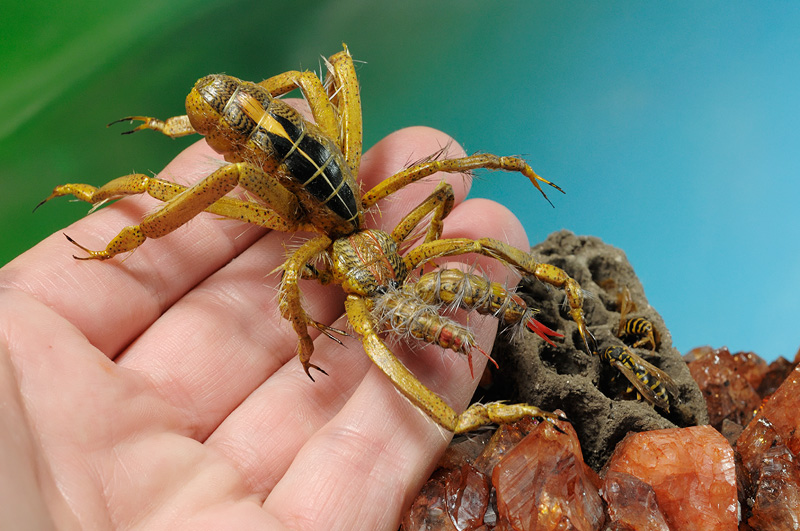

Spiders need considerable mobility of their abdomens in their spinning activities, and the Solifugae have no such adaptation. The lack of the pedicel reflects another difference between the Solifugae and spiders, namely that solifuges lack both spinnerets and silk, and do not spin webs. As shown in the illustrations, the solifuge prosoma and opisthosoma are not separated by nearly as clear a constriction and connecting tube or " pedicel" as occurs in Araneae.

Like that of the spider order, the Araneae, the body plan of the Solifugae has two main tagmata: the prosoma, or cephalothorax, is the anterior tagma, and the 10-segmented abdomen, or opisthosoma, is the posterior tagma. Most species are closer to 5 cm (2 in) long, and some small species are under 1 cm (0.4 in) in head-plus-body length when mature. More practical measurements refer primarily to the body length, quoting leg lengths separately, if at all. In practice, the respective lengths of the legs of various species differ drastically, so the resulting figures are often misleading. Solifuges are moderately small to large arachnids (a few millimeters to several centimeters in body length), with the larger species reaching 12–15 cm (5–6 in) in length, including legs.

Ventral aspect of a solifuge, showing respiratory slots


 0 kommentar(er)
0 kommentar(er)
